I got a Form 1 3D printer!
It’s the first 3D printer I’ve purchased (technically, I “backed” it). I managed to acquire a pre-release beta unit, as I’m affiliated with Neoteny Labs, one of Formlabs’ investors.
What’s the first thing I do with any shiny new gadget? That’s right, I take it apart!
The complete Form 1 kit consists of three boxes: the printer (shown above), bottles of liquid photocurable resin, and a cleaning station. Many optical stereolithography printers require a cleaning step to wash off the uncured resin; for the Form 1 this means rinsing the part in isopropyl alcohol (the same stuff you use to disinfect cuts, but more concentrated) for a few minutes.
The packing method, at least for the beta, is styrofoam-free. It uses a pair of thin plastic sheets suspended on cardboard frames to hold the printer in a cradle. For a box that went as checked luggage from Boston to Singapore through three flights, it held up remarkably well.
The printer box also contains the power supply, cables, and the requisite quickstart guides.
The serial number scheme, at least for the beta units, is “AdjectiveAnimalname”, so mine is simply “ChiefCat” — hurray for easy-to-read serial numbers!
Undressing
You need exactly one tool to disassemble the printer: a 2.5mm hex key (or, if you’re a fan of Torx, a T-10 bit). I really appreciate the balance of good design with practicality: it looks good, and you don’t need whacky pentalobe screwdrivers to service it. It does take a bit of elbow grease to undo the screws; but a grippy Torx driver makes short work of the problem without a single stripped screw.
Two screws release the orange-colored light shield from its hinge, and four screws release the top of the base unit from the frame. The orange-colored shield protects your eyes from stray blue laser light, while also protecting the photosensitive resin bath on the inside from stray ambient light.
Six more screws (two of which are on the bottom) release the mid-frame from the base. The mid-frame is screwed to the front and back panels, but I didn’t need to remove the panels, as there is enough flexability in the sheet aluminum to slide the mid-frame off. The wiring to the front panel is tidily secured and is exactly the right length to allow the frame to sit next to the base without having to undo any cables — super-convenient for service and debug.
The inside of the front panel reveals the adapter for the OLED display, as well as the very handsome back-lit power button.
The Mechanism
One of the great things about a stereolithography 3D printer is that it uses a laser to cure a resin, instead of melting and extruding a plastic. As a result, the operation is whisper-quiet, and there is no odor during operation — you can put the printer in a bedroom and still sleep at night. To borrow the words of Obi-Wan Kenobi: “This is the 3D printer of a Jedi Knight. Not as clumsy or as random as an FDM, but an elegant tool for a more civilized age.”
I count four motors in the Form 1: two stepper motors with lead screws, and two galvonometers (which I refer to as simply “galvos”). Let’s tour the printer’s mechanisms, motor by motor.
A large stepper motor with a lead screw running up the spine of the device pulls the build platform upwards. This causes the printed object to appear to “grow” out of the resin bath.
The build platform is attached to the leadscrew with an anti-backlash nut. The spring in the picture above applies a static force to the leadscrew-nut interface, reducing the play between the two and improving accuracy.
Every time a thin layer of resin is cured, a second motor performs a “peel” operation by tilting one edge of the resin tank downwards. The peel operation separates the newly formed layer from the bottom of the resin tank, allowing the build platform to move up freely. The leadscrew pictured above is responsible for this action, and it is driven by the smaller of two motors inside the Form 1. The white bearing is fixed to the frame, and the pin connecting the leadscrew to the tiltable resin tank is visible at the top.
Ah…and now we peer into the heart of the Form 1! Here are the two remaining motors of the Form 1, the galvos. Galvos are very precise rotational actuators, with a built-in optical feedback loop (take a look inside one). The galvos each have a tiny octagonal mirror attached to their shafts, and are mounted at right angles to each other. One galvo steers the laser beam, entering from the left, along the X axis; then the light bounces to a second galvo that steers along the Y axis. The two working together can thus trace the 2-D vector pattern used to cure a single layer of resin. Below the galvos and laser is a mirror that reflects the light to another, larger mirror that finally shines the beam upwards into the resin bath.
Above is another view of the laser. According to the safety warning bundled with the printer, it is a 405nm, 120mW violet laser diode (take a look inside one).
In order to achieve high performance, the galvo has a sturdy bank of drivers, mounted to the bottom aluminum surface of the case for heat sinking.
A slightly different camera angle shows the power input stage of the Form 1.
The main board wraps around the spine of the Form 1 and on the left side are the brains. An STM32 32-bit ARM Cortex-M3 microcontroller coordinates all of the activities inside the Form 1, and it appears that firmware for the device is stored on an internal, captive SD card.
Above are some photos that give the whole context of the electronics behind the Form 1.
A hall effect sensor inside the base makes sure you can’t turn the device on when the protective light shield is lifted. But, you can defeat the sensor by putting a magnet on it, as I did above to check I hadn’t damaged anything before putting the whole thing back together again.
Re-assembly is a breeze — within a couple minutes I have the whole printer put back together and ready to do my first test print.
My First Print
What’s the first thing I’m going to print? I’m going to download and print a stand, designed by another user (IHeartEngineering) and shared for free, for my Geiger counter!
The Form 1 comes with a print management software package called “Preform”. It’s intuitive and easy to use; it allows you to place multiple objects on the build platform, duplicate, scale, and rotate. There’s an auto-orient feature that suggests an optimal orientation for supports based upon a DFM analysis. The screencap above is the result of the software picking the build orientation and populating the build supports.
I click “Form”, and about 10 hours later the print is done.
The next step is to remove the build platform from the printer and bring it to the cleaning station, one of the accessories shipped with the Form 1. Cleaning is necessary to remove uncured liquid resin residue, and it’s recommended to handle uncleaned parts using gloves to avoid getting the goopy resin on your fingers.
The cleaning station is thoughtfully laid out, with an area designed to hold the build platform. The kit includes some of the requisite tools to peel the part off of the platform, rinse it, and break off the supports. I supplement the kit with a pair of diagonal cutters for removing the supports, although you can also simply snap the supports off by pulling on them.
Two minutes of active shaking in an isopropyl bath, ten minutes of soaking, and the part is ready to be handled.
I use a pair of diagonal cutters to remove all of the supports in about five minutes.
This particular part features large, robust geometries: it’s designed to be printable on an FDM, so it doesn’t show off the high-resolution capability of the Form 1.
Small bumps are left on the area where the supports contact the part. These can be sanded off, if necessary.
The print is a success! It fits my Geiger counter like a glove.
And now for the shameless plug: if you made it all the way through this tear-down, and you’re a top-notch EE, you might want to consider applying for Formlabs’ Electrical Engineering Lead position by dropping them an email with your resume and cover letter.
Tags: 3d printer, form1, formlabs, teardown
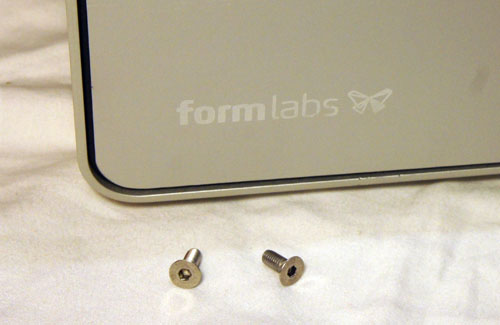
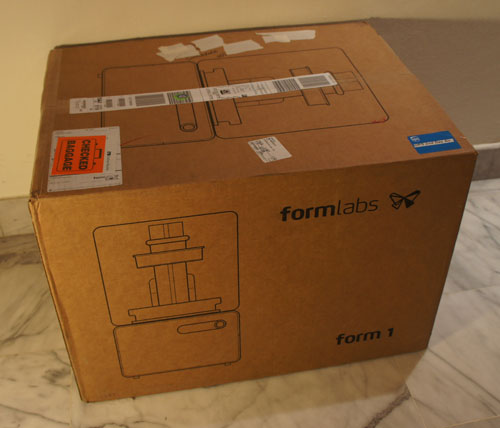
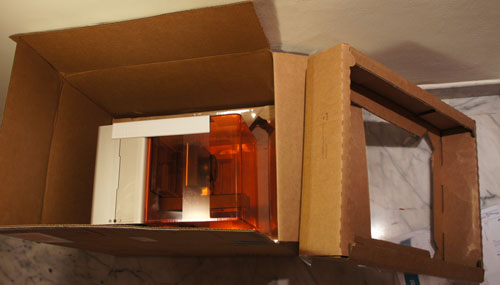
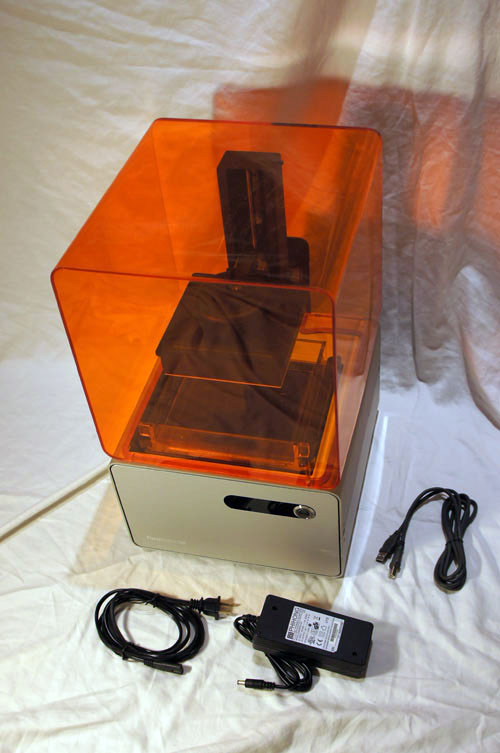




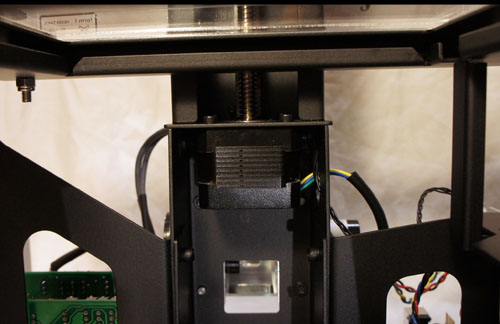
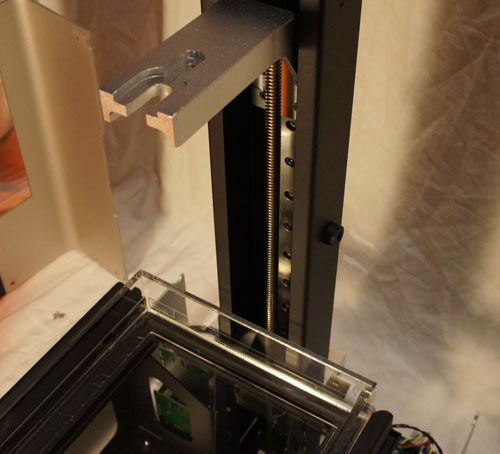
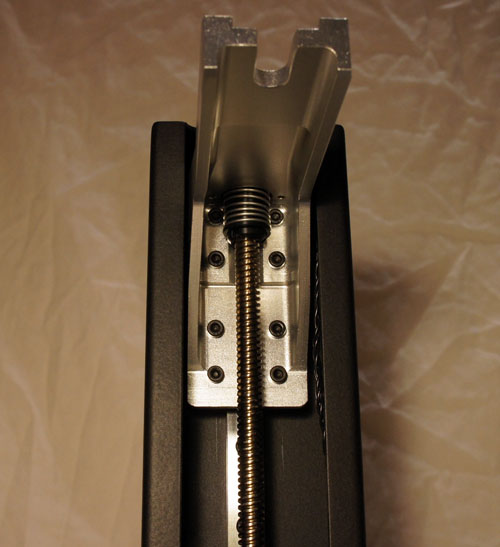


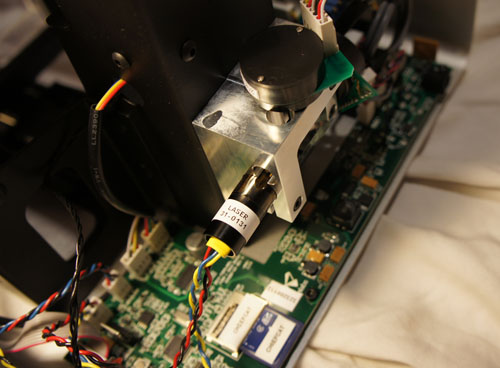
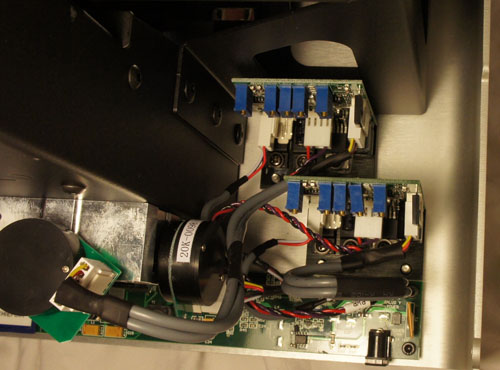
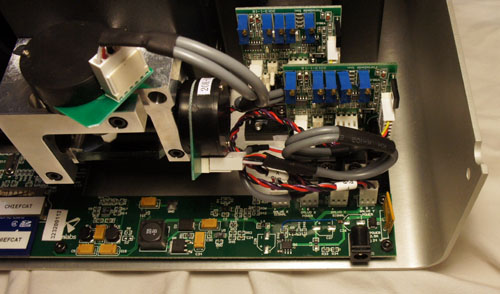
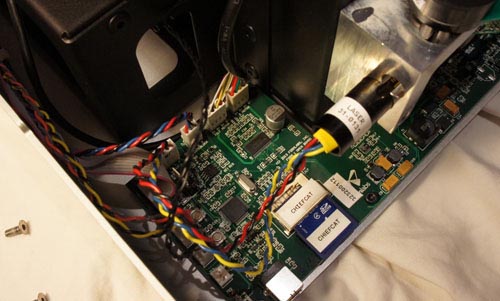

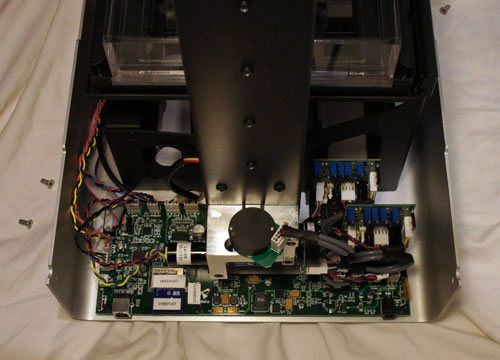

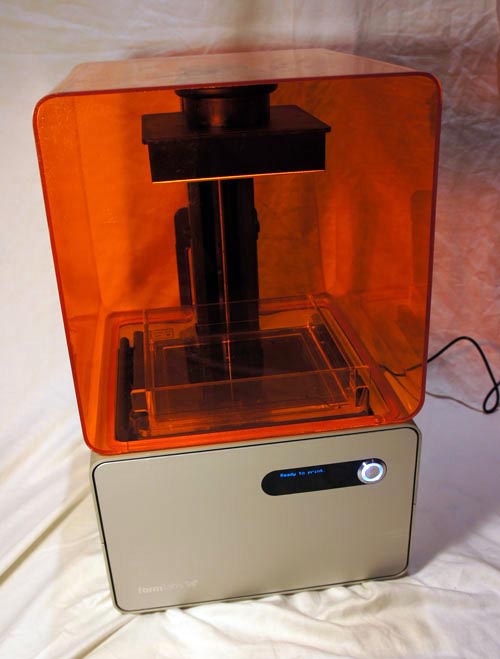

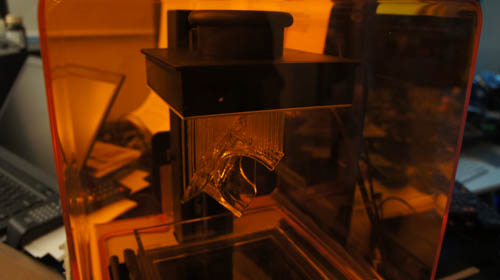
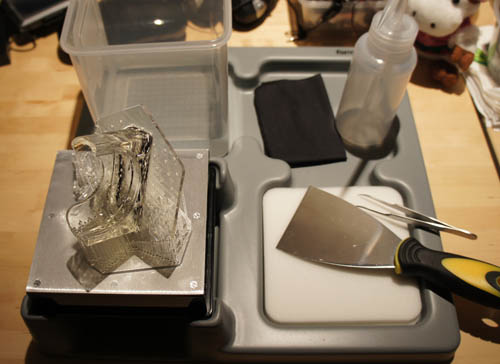
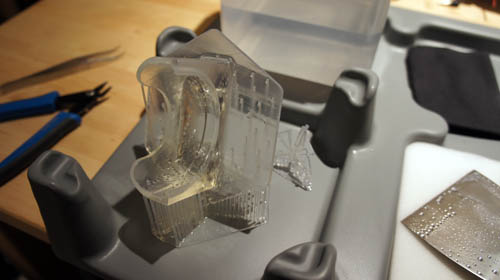
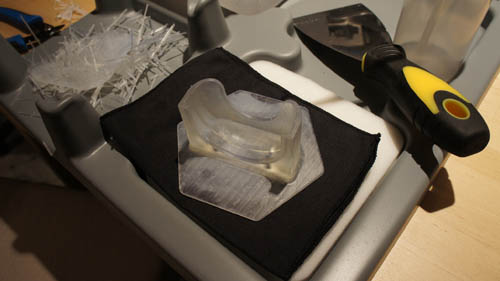

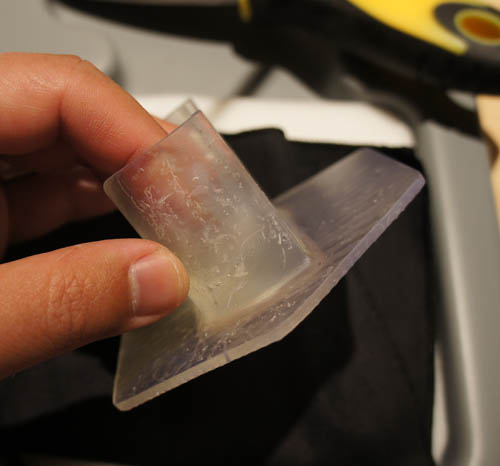
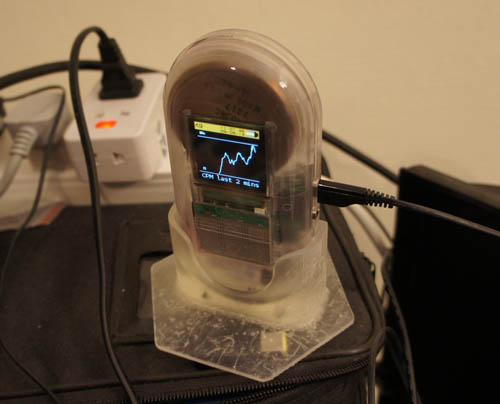
The build quality looks stunning.
You mentioned a while back that you had received a laser cutter/engraver. what ever happened to that? I was considering buying that brand.
It was a Full Spectrum. would you recommend it?
It’s been good for me so far. Good value for the money, I’d say.
they offer a multitude of upgrade options for that unit. Any suggestions on what upgrades are necessary?
10 hours? For print this piece? Lot of time, no?
(see comments below)
hmm….
I got the air compressor, and air purifier so I could use it indoors. But I think the accessories will depend upon what you want to do with it, and how much you want to build/set up your own venting system.
[…] Formlabs Form 1 Teardown […]
Very nice tear down, the galvo looks very like the one I got for my scanner…
http://exploreideasdaily.wordpress.com/2013/03/18/first-steps-of-the-scanner-building/
Interesting, I can’t wait to have my form 1.
Cheers
[…] teardown of the new FormLabs Form 1 3d printer (with […]
Thanks for publishing the interesting and informative, exclusive teardown bunnie.
I had a question about how the peel/tilt mechanism worked, because with my understanding there was the risk of part location variance between each cycle. Of course the printed object is not pushed up, it’s pulled out — a brief segment of the printer’s operation tucked in a clip on youtube cleared that up for me. Just thought I would leave a note in case anyone else had the same idea.
Very nice, clean design of the printer — my feelings are part jealousy, and part desire to find the performance limits.
What resolution did you print that at?
50 microns resolution. The software has options ranging from 25 microns to 100 microns resolution, if I’m understanding this pull-down menu correctly.
[…] One of the investor in FormLabs (Bunnie Huang) has provided a detailed breakdown of the machine which you can check out here. […]
You’re the best, Bunny. Keep on keeping on.
So the scanning uses galvos (galvAnometers)… That’s clever! This is the fastest method.
Ten hours to print. Seems rather long. Is it typical?
It doesn’t seem to be. The print time is a function of height, resin volume cured, and resolution. This example piece is a solid resin block between the supports and the base, so that took a bit longer. I’m printing a similarly sized mathematical knot (so it’s a lattice that doesn’t consume as much resin) at 100 micron resolution and it’s running in 3.5 hours.
Hi Bunnie!
I was wondering if you, or any other owner of the form 1 printer could print a small model for me, and how much would it cost you to do it?
(I understand it takes time and resin so I would gladly pay for it)
I would like to see what it can do before I buy one myself.
My email is joe[dot]stupensky[at]gmail[dot]com
I guess you’re too busy to answer or simply not interested
:/
I wish there was a way to try and print something before spending $3500…
Oh well…
Hi sorry — I had for some reason missed this comment as I was scrolling through quickly. I…don’t think it would be very cost efficient for me to print you something and then mail it to you from Singapore.
Your best bet is to drop a line on the community forum:
http://support.formlabs.com/categories/20100046-Community-Forums
You mentioned “Two minutes of active shaking in an isopropyl bath” … I’m assuming an ultrasonic cleaner would be a good idea, yes?
Hm, I hadn’t considered that. That’s a good idea.
I have an ultrasonic cleaner, I’ll give it a try.
How much does the material cost? What would be your pricing estimation for the example you show?
Interesting article showing the product in great details. Wish I had one already. Thanks!
They just posted the price for resin on their home page – listed at $150 for 1 liter, although Kickstarter backers are getting a deal for up to 3 bottles at $129/liter.
The resin volume for the print was 74ml so this was about $11. However, as I get to use the printer more, I realize this piece is pretty resin-inefficient, it has large regions of mostly resin which could have been hollowed out, and saved a good deal of print time and resin.
[…] did a great teardown of the Formlabs Form1. Can’t wait to hear more about the low cost SLA […]
Hi Bunny, It’s Pete (dino robot guy from the old AI lab) I seem to have lost your contact, I have a few questions I would like to ask you, would you mind if you have a chance, shooting me a quick email so I can converse?
thanks!!
-pete
my email is: freakazoidal AT gmail dot com
10 hours! For God sake! Now i know why the guys at Formlabs never told us anything about actual printing time. The resine finish needs some painting. It looks awful at natural. In one of the pictures i can see a V shaped path. Does it exist on the cad model too or is it an artifact of the printing process? Thanks for your detailed review!
The V-shaped artifact does not seem to be in the CAD. It looks like a hairline surface artifact. I took the photo with a specular reflection to highlight the layering artifacts that arise from the printing process, without the light shining at the right angle, it’s difficult to see.
I printed at a 50 micron resolution, and the design is a big block of resin so it takes longer to print.
I’m running a similarly sized piece at a lower resolution (100 microns) which doesn’t have large solid resin features, and it is taking 3.5 hours.
very cool. i want one!
Thanks for the post. You are the Fucking boss!
Why didn’t you align it the way the holder is supposed to stand when done (approx. 75 degrees to the right)??? You could have saved the support material?
All those preset potentiometers look scary!…i.e. looks like a lot of scope for things to go out of whack or is this just for prototype?
Dale
I want to produce small car models with the form 1 ( z scale) May I send you a stl file and you can print a model for me? I pay for it but I want to see what the printer is able to do.
LEO
hi do you know any reseller in Singapore? or do you mind share with me more information:)
Any chance you can put up the part number for that motor used for the tilt action?
Excellent site and forum. Wondering who will hack to highest resolution, I did not think it had even 50 micron resolution ( ie is the 50 you state XY or Z resolution ?) Mike
Hi, I received my form 1 yesterday and my first print came out shifted in the x direction.. and the result is a bit distorted as well… do you think it might be a loose galvo? is it difficult to tear it down to check the galvo? Thanks a lot!
Leonard,
That sounds like it could be a defective printer. Please contact our support team (https://formlabs.zendesk.com/anonymous_requests/new) and we will help you get it sorted out!
Nice write up, thank you!
I wish I could afford one right now, would be so much better for my models…
You’re pretty courageous taking the Form 1 3D Printer apart, risking to damage it, when hundreds of people are waiting months and months for theirs to be delivered :-)
Thanks for the cool insight into the system though, appreciate it a lot!
Etienne
Hi bunnie
Can you tell me what is the XY resolution of form1 and it is suitable for jewellery or not???
I pay a quick visit each day a few sites and information sites to read articles, however this webpage provides quality based posts.
Hello?
can you sell your form 1 ? I can pay $6,000 ?
Please contact me.
hey there! , I like your current creating extremely a lot! percent most people connect added of your write-up for AOL? I actually need a practitioner on this place to resolve this difficulty. Possibly that is definitely you! Looking forward to look anyone.
This kind of concerns, maybe fears, are in reality quite easy to taken care of by the trance.
Self-hypnosis aids you to “get into” your natural thought
processes As where your family worry takes coming from.
As a consequence merely learning from another self-hypnosis audio it is easy to retrain as their
pharmicudical counterpart to overcome vintage combined with excessive possibilities and take alone using most of the dentist’s massage
chair sensation peaceful and also focused. In such a time, anyone can carry extended teeth as well
vibrant teeth. So why please let that suspicions keep you
from looking great plus experience at ease?